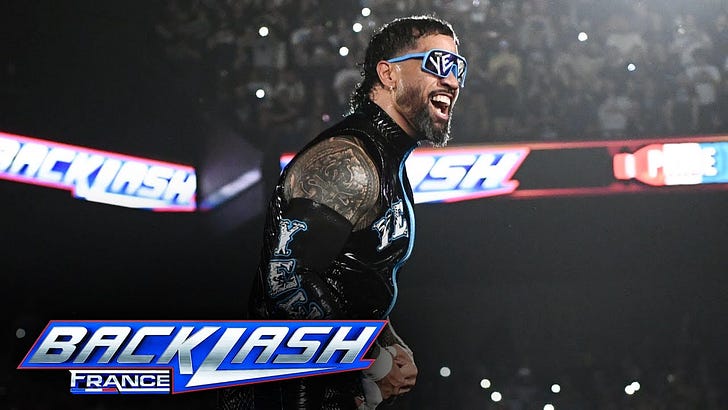Lesson on storytelling: You have to make them feel.
Lessons on Storytelling from Professional Wrestling
This year, at WrestleMania, Jey Uso won the WWE Heavyweight Championship. It's been a long journey for him, but he sold himself when he was able to connect with the fans. He made them feel.
I broke down the need to make people feel using storytelling in my article “5 Lessons I learned about Storytelling from Professional Wrestling” in 2024.
This story is the lesson of “making them feel.”
Lesson One: You have to make them feel.
In professional wrestling, you have to make the audience feel something. This is a crucial part of storytelling both in pro wrestling and in life.
The first example that comes to my mind was when WWE was in Lyon, France recently. When WWE Superstar Jimmy Uso came out for his match, the arena exploded. The crowd went nuts, and they were doing his dance.
Update: A year later they are still doing the Yeet dance.
That’s one way that you, as a performer, know you are making them feel something. The audience mimicking you, they’re doing your dance. They are singing your song. They are saying your catchphrases with you.
And when it comes to professional wrestling, it is imperative that you make them feel. Your job depends on it. If you don’t make them feel, then there’s no reaction from the fans. You might get sent to a developmental territory. You might get let go.
The company will try different gimmicks with you as the performer. They will try different character types to see what works.
As a performer, you want to do one of two things. You want to make them hate you (that’s called heat) and you want to make them cheer you. If you get heat from the crowd, you are a good enough villain. You’re a good enough heel. You get the heat and so the crowd boos you.
And if they love you, they cheer you on. They sing your song. They do your dance. They say your catchphrases.
One example of that is LA Knight. Everybody knows what he’s going to say, it’s no secret. He says it. The fans say it with him. He’s over (when a wrestler has a huge crowd reaction, it’s called “over”). The fans love him. In fact, they started doing his catchphrases and everything while he was still a heel. WWE had to turn him face to accommodate that.
It’s never some rare cases where the fans do both for the same guy. So some will cheer and some will boo. Two examples of that are John Cena and Roman Reigns. Reigns was really in, as he calls it, “God mode.” In the past year or so, half of the arenas are cheering him. They do his mannerisms and acknowledge him as The Tribal Chief. The other half is booing and booing him.
He was drawing both heat and cheers at the same time. That’s rare. He was the top guy with, uh, 1300+ days as the top champion. So he was doing something right.
And so you got to make them feel. And of course, the promos help. As a performer, you go to the ring and you cut a promo. There, you tell them your motivation for attacking someone. Or, you tell them your motivation for winning the title or getting your revenge.
Most of the time, the wrestler promos are done on TV and in front of the crowd. Everyone needs to hear you, hear what you are thinking, saying and feeling. Everyone needs to hear your “why?” It’s imperative, and It’s part of your character’s backstory.
So you make the fans feel something good or bad. If you’re doing that, you’re doing your job.
Connecting with your audience is the biggest thing you can do as a wrestler and as a storyteller. No reaction is the worst reaction.



